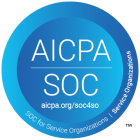The customer journey is the backbone of any successful business strategy. It’s the roadmap that leads a prospect from being just a potential customer to becoming a loyal and returning one. The ultimate goal of any growth or go-to-market team is to streamline this process and make it as smooth and efficient as possible for their target audience.
Optimizing the customer journey is crucial for companies of all sizes and across all industries. It involves mapping out the key touchpoints and experiences that a customer has with your brand and finding ways to improve them. In this article, we will delve into the six essential steps that every company should take to optimize their user and customer journey. These steps will help you better understand your customers’ needs and create a journey that is tailored to their unique requirements.
_
Step one: Gather your user data
The key to optimizing the customer journey is understanding who your target audience is and what their needs and preferences are. This information is crucial for making informed decisions about how to optimize their journey. To do this, it is important to collect and analyze customer data, including metrics, product data, and communication data. These metrics will provide insights into your target audience and guide the optimization process. Choose the metrics wisely, as they will play a crucial role in shaping the journey for your customers.
Step two: Map your user journey
A crucial aspect of optimizing the user journey is mapping out each step from start to finish. This involves considering the timeline of the journey, identifying different user groups and their unique needs, and analyzing the behavior patterns of your target audience. By understanding these key elements, you can create a comprehensive map that effectively guides users through their experience with your brand. Utilize available data and research to gain insights into your audience’s behavior and ensure your map accurately represents their journey.
Step three: Evaluate funnel performance
Now that you know what the user journey looks like in general, work on making it as easy as possible for as many of your target groups as possible. Where are the strengths of your funnels, and where are the potential pitfalls that will cause your target to fall away or look elsewhere? Just as importantly, what are the popular parts of the journey that move your audience forward more rapidly to the next step? Getting feedback from users is essential at this stage. Make sure that you listen closely to what your target users have to say at chokepoints and acceleration points.
Step four: Know your ideal customer profile
Once you have mapped out your user journey, observed targeted group behavior within that journey, and received feedback as to why those behaviors took place, you can then identify a target group that is most aligned with your overall user journey and product offering, usually referred to as your ICP (Ideal Customer Profile). Note: Just because you have identified the most advantageous customer for your business does not mean that you neglect the other groups. However, you now know which groups to prioritize and focus on as your baseline. Your baseline group should also serve as a control group of sorts. If they do not engage with your journey at any point, then you know that you have internal issues to work out.
Step five: Engagement and personalization
Now that you have a user journey you are confident as well as a control group of baseline users to count on, you can work towards becoming more engaging to greater amounts of people. You can also work on personalizing the journey for customers who deserve an extraordinary amount of priority. What are your optimization points? Can they be replicated so as to engage more users and greater numbers of users? Can you add engagement points at more difficult times in the journey to keep less enthusiastic people on board?
Step six: Measurement and reporting
During every step in the process, you should be measuring and reporting back your results. The formation of a user journey is iterative in nature; that is, once you get to the end, you circle back and start over with the experience of the previous journey informing your future endeavor. So even though measurement and reporting is at the end of this article, it should actually take place throughout the creation of the customer journey. Take special note of the points of greatest improvement and disappointment. Now is the time that you can begin to replace all of your assumptions with hard data for better results down the line.
If you need help with this process, Coho AI can help you automate the mapping of your user journey, identify your weak spots and set up your new engagement. automations for optimization.
In short, we help you color your map inside the lines, which can greatly shorten the timeframe in which you create your user journey. And the sooner you get your journey created, the more quickly you could begin to assess your target audience and bring in the hard data that will inform your relationship with them for years to come. Contact us to learn more!


